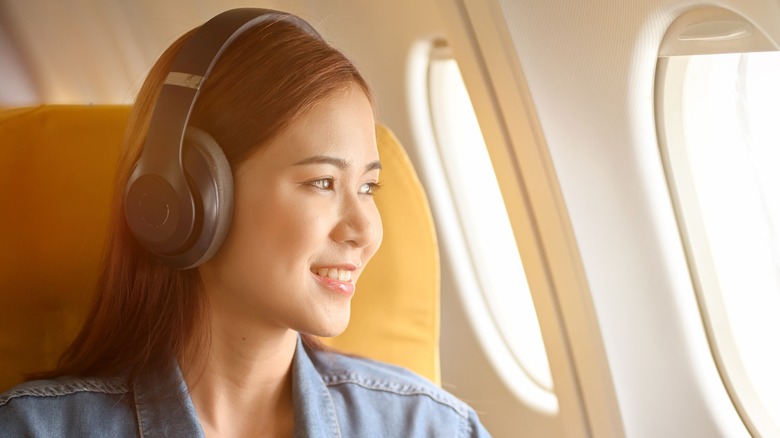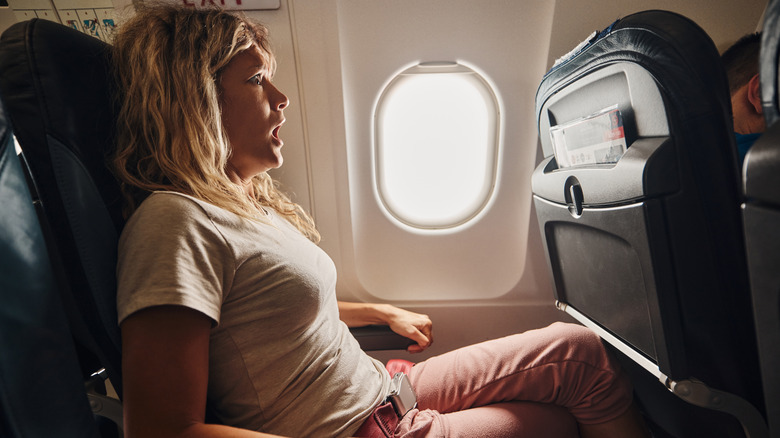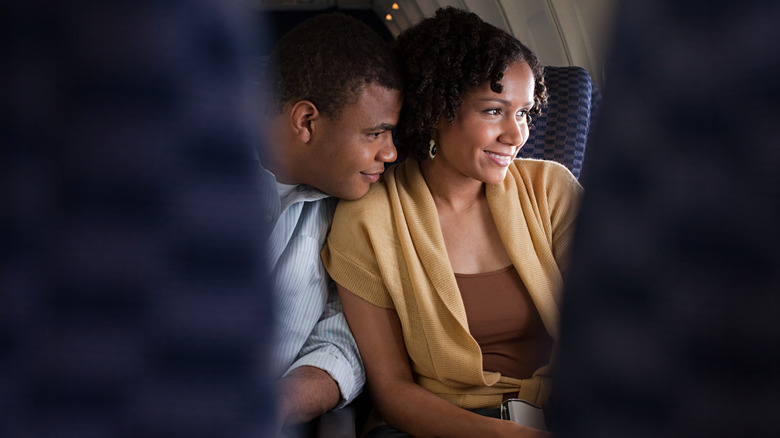How To Check The Turbulence Forecast Before A Flight
According to the Washington Post, roughly 40% of people report some level of fear of flying, with 2.5% suffering from a clinical phobia of flying. Intellectually, you may understand that flying is an incredibly safe mode of travel. But fear doesn't typically rely on stats and logic, rearing its anxiety-prodding head in all kinds of situations. And, let's face it, while we have the technology, humans aren't anthropologically or biologically conditioned to fly. The point is, it's totally understandable that a large percentage of people experience some level of flying anxiety.
While 40% is already a large percentage, this number probably shoots up when an airplane hits turbulence. Even the most experienced flyer will sit up a bit straighter if the turbulence is bad enough. Besides the jostling, one of the reasons that turbulence can be a bit frightening is that it seemingly comes out of nowhere. Although pilots may offer a warning and turn on the seatbelt light, pilots are also often caught off-guard.
If you're someone who gets a bit antsy before and during a flight, there's one app that may help ease your mind a bit. While the app can't smooth out the skies, it can minimize the surprise element of turbulence.
Turbelance is totally normal, but getting worse
Turbulence is a natural phenomenon that occurs due to the physics of air. While we won't get too deep into it, a plane in the sky is similar to a boat in the ocean. The aircraft reacts to wind flow and air currents, and the air is fluid like water. Typically, flying over mountains, jet streams, and storms can all cause airline turbulence. While turbulence is totally normal, the airplane's seemingly erratic movements can still be frightening.
Experiencing turbulence is common on flights, and unfortunately, a recent study by the University of Reading in England indicated that turbulence has actually increased over the last four decades due to climate change. In an interview with CNBC, Paul Williams, a professor of atmospheric science at the university and a co-author of the study, shared that turbulence may have increased by as much as 55%. "I think ... it's hard to believe that there could be 55% more turbulence in the atmosphere and for planes not to be encountering it more," he said. While this isn't exactly good news for nervous flyers, technology is helping to improve prediction models, and you now have access to these forecasts.
Fly Calmly app warns you about less friendly skies
In some good news, pilots are getting increasingly better at avoiding turbulence due to better prediction models. Regarding rockier skies, Williams added, ″[This] doesn't necessarily mean planes are encountering turbulence, clear air turbulence, 55% more often because, of course, planes try and avoid it and they've been getting very good at avoiding it."
Due to advancements in technology and weather modeling, pilots aren't the only ones with access to turbulence prediction. You can now also check the predicted bumpiness of your next flight by downloading the Fly Calmly app.
After downloading the app, simply put in your flight date and number, and you'll receive details concerning turbulence. You'll learn when on your flight you can expect turbulence and the intensity of the turbulence. Although you may still need to white-knuckle a bit, very nervous flyers may avoid an in-flight meltdown during rougher patches of the journey with a little forewarning. And if you order a glass of red wine 15 minutes prior to predicted turbulence, we wouldn't judge you.


